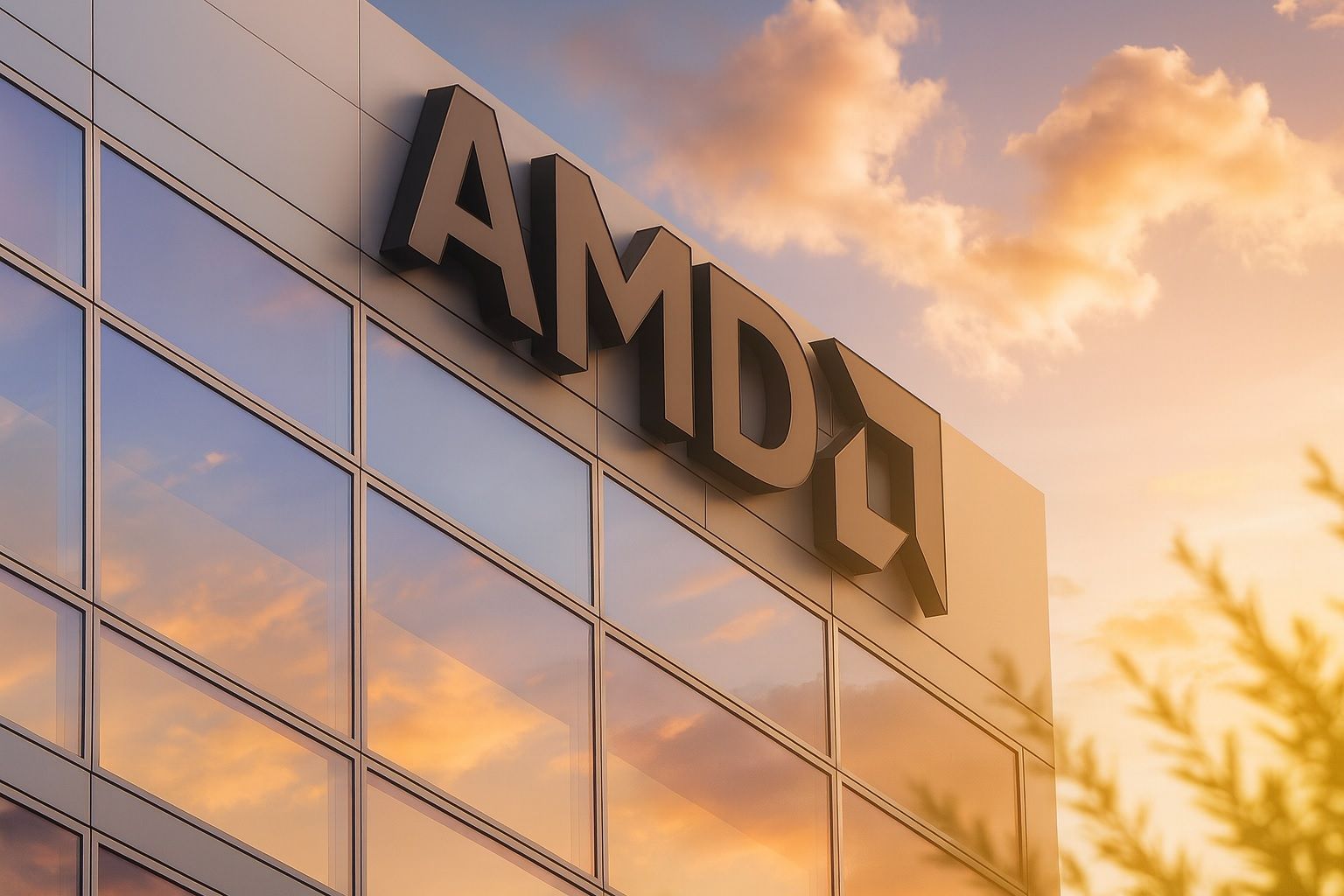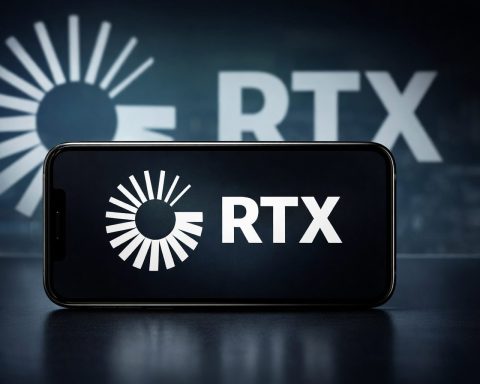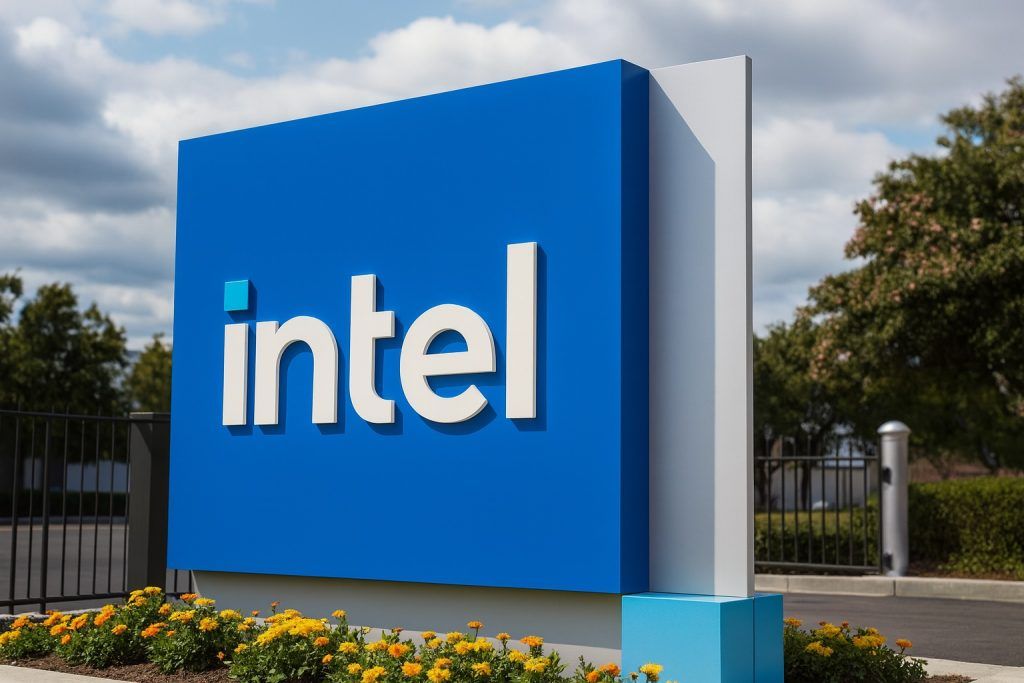- Stock Surge: AMD shares have soared this year (~+80–90% YTD) amid booming AI demand [1] [2]. In mid-October, AMD briefly hit all-time highs (around $238 on Oct. 15) and closed Oct. 24 near ~$253 [3] [4]. The jump was fueled by blockbuster AI announcements and broad tech market gains.
- AI Deals: In early Oct. AMD announced a 6 GW GPU supply deal with OpenAI (ChatGPT maker) and warrants for up to a 10% stake [5] [6]. Shortly after, Oracle agreed to deploy 50,000 of AMD’s next-gen MI450 GPUs in new AI cloud superclusters (starting 2026) [7] [8]. AMD expects these and related wins to generate over $100 billion in revenue over four years [9].
- Analyst Sentiment: Wall Street has turned highly bullish on AMD. Roughly 60–65% of analysts rate it a Buy (up from ~50% earlier) [10]. Top firms have lifted 12-month price targets into the $250–$310 range – for example, Bank of America’s Vivek Arya now sees a $300 target [11], and HSBC’s target is $310 [12]. Wolfe Research (Outperform, $300 target) projects AMD could reach >$10 EPS by 2027 on this growth [13].
- Competitive Landscape: AMD is still chasing market leaders. NVIDIA currently dominates ~90–94% of data-center AI GPUs [14]. Intel is re-entering the AI race with its new “Crescent Island” chip for 2026 [15] (NVIDIA even bought a 4% stake in Intel for $5B to co-develop chips [16]). AMD’s answer is an open-platform strategy – combining its Instinct GPUs, EPYC CPUs and a new Helios rack-scale system – which hyperscalers like Oracle and Meta have signed on to support [17] [18].
- Valuation & Caution: At current levels, AMD’s valuation is very high: roughly 40× expected 2026 EPS (well above NVIDIA’s ~30×) and a trailing P/E north of 100 [19]. Analysts note this leaves “little room for error” – any slowdown could trigger profit-taking. Some technical indicators suggest the stock is quite overbought in the near term.
- Market Context: The rally comes amid a broad tech/AI euphoria and optimistic Fed outlook. U.S. indexes (S&P 500, Nasdaq) hit fresh records as September CPI inflation came in slightly below forecasts [20] [21], bolstering bets on Fed rate cuts. Chip stocks have surged (the Philadelphia Semiconductor Index is up ~32% in 2025 [22]) as investors pour money into AI plays.
Market Performance & Stock Price
Advanced Micro Devices has been one of 2025’s hottest stocks. After languishing around $150–160 through mid-summer, AMD’s share price exploded higher on the AI hype. On Oct. 6 – the day AMD revealed the OpenAI deal – the stock spiked ~34% intraday, instantly adding tens of billions in market value [23] [24]. It briefly hit a record $238 intraday on Oct. 15, then consolidated around $230–240 for a week. A surprise news on Oct. 24 (IBM reported running a quantum algorithm on an AMD chip) sent AMD soaring again – shares jumped ~7–8% that day to a new all-time high [25]. By market close on Oct. 24, AMD was trading in the low-$250s, implying roughly a 90% gain YTD.
This run has pushed AMD’s market capitalization into the upper hundreds of billions ($350–380B by some measures), making it the world’s third-largest chipmaker behind only NVIDIA and Intel. In short, AI optimism has propelled AMD into rarefied territory. Still, traders note that after such a rapid run-up, some pullback or digestion is possible. Key support levels are now in the ~$230–240 range, and a clean breakout above the mid-$250s could pave the way toward the $270–300 region.
AI Mega-Deals Fuel the Rally
The primary catalysts have been two blockbuster partnerships. In early October, AMD and OpenAI (maker of ChatGPT) announced a 6 gigawatt supply agreement for AMD’s Instinct GPUs [26] [27]. In practical terms, AMD will deliver a total of 6 GW of GPU capacity (millions of chips) to OpenAI over several years, with an initial 1 GW phase in 2H 2026 [28]. As part of the deal, OpenAI even received warrants to buy up to 160 million AMD shares (about 10% of the company) when certain milestones are met [29], aligning the interests of both firms.
AMD’s CEO Lisa Su hailed the OpenAI deal as “a true win-win enabling the world’s most ambitious AI buildout” [30]. CFO Jean Hu added that the partnership “is expected to deliver tens of billions of dollars in revenue for AMD” while being “highly accretive” to earnings [31]. OpenAI’s Sam Altman likewise praised AMD’s role, saying its chip leadership “will enable us to accelerate progress and bring the benefits of advanced AI to everyone faster” [32].
Just over a week later on Oct. 14, AMD announced another big win – this time with Oracle. Oracle Cloud Infrastructure (OCI) revealed it will deploy 50,000 of AMD’s forthcoming MI450 GPUs in new AI superclusters [33] [34]. The Oracle press release makes clear these will be organized into “AI superclusters” powered by AMD’s new Helios rack design [35] [36]. Helios is essentially a fully AMD stack – MI450 GPUs, next-gen EPYC CPUs (“Venice”), AMD’s Pensando network ASICs and an open-standard rack architecture. Oracle says the first 50,000 GPUs will come online in late 2026 and expand through 2027 [37] [38].
These two deals – with the world’s biggest AI customers – signal a massive new addressable market for AMD chips. Altogether, management estimates over $100 billion in additional revenue over four years from the OpenAI/Oracle agreements and related deals [39] [40]. By comparison, AMD’s total revenue was ~$25 billion in 2024, so the potential upside is enormous. In the near term these partnerships don’t immediately boost AMD’s Q3 results, but they dramatically improve the company’s long-term growth runway and have ignited the stock’s surge.
AMD has also quietly won other AI-related partnerships. For example, it joined with IBM to set up a large AI lab on IBM Cloud (project Zyphra) using AMD MI300X GPUs [41], and Cohere has certified its latest large-language models on AMD hardware [42]. Meanwhile, AMD continues to expand its consumer and enterprise products: at the Oct. 14 Open Compute Summit it unveiled its Helios system (targeting cloud AI) [43], and in the coming months it is expected to release new EPYC CPUs and Radeon GPUs for data centers and PCs alike.
Analyst Outlook & Market Reaction
Wall Street’s response to all this has been overwhelmingly positive. Leading analysts have raised their forecasts and price targets. Bank of America’s Vivek Arya upgraded AMD to a $300 price target [44], citing the new “visibility” provided by the Oracle and OpenAI news. Wolfe Research similarly set a $300 target (Outperform) and noted AMD could reach more than $10 EPS by 2027 if it executes on these deals [45]. UBS, Jefferies and Barclays have also lifted their targets into the mid-$200s or higher. The net result: AMD’s consensus 12-month target is now around $250 (roughly 8% above Friday’s close) [46], with roughly two-thirds of analysts rating the stock a “Buy” [47] [48].
When the deals were announced, the market reaction was dramatic. On Oct. 6 (OpenAI news), AMD shares jumped ~34% intraday [49], the biggest one-day gain since 2016. On Oct. 14 (Oracle news), AMD rose ~3% in early trading even as other tech stocks sold off on geopolitical fears [50]. By contrast, its peers saw smaller moves: NVIDIA climbed, but by a lesser amount, and Intel’s stock was flat to slightly up after Oracle’s announcement.
Analysts note that these agreements serve as a powerful validation of AMD’s technology, even if NVIDIA still holds the dominant market share. “It’s a major vote of confidence in AMD’s AI chips,” says Leah Bennett, CIO at Westwood Group. She points out that AMD “has really trailed NVIDIA for quite some time,” so getting marquee customers like OpenAI and Oracle on board is significant [51]. However, she cautions that AMD still has “a lot of catching up to do” in the AI segment. In the CPU market, Bank of America’s Arya observes, AMD continues to gain share against Intel in both servers and PCs, as Intel has lagged in manufacturing technology [52].
Technically, the stock’s chart is also on investors’ radar. AMD is up ~90% year-to-date [53], so some traders warn of overbought conditions in the near term. Momentum indicators are very high, suggesting a possible short-term pullback or consolidation. On the upside, key resistance points lie in the $260–270 area; a sustained break above that zone could make the $300 target achievable. On the downside, immediate support sits around the $230–240 range, followed by the $210–220 zone where the 50-day moving average currently lies. Notably, many analysts expect AMD to “beat and raise” on its upcoming Q3 report (due Nov. 4). Rosenblatt’s Kevin Cassidy (Top Analyst) predicts a “modest beat-and-raise” quarter, driven by continued strength in PCs and servers [54]. Consensus forecasts are for Q3 EPS of about $1.17 (up ~27% YoY) [55] on revenue around $8.7 billion (≈+20% YoY) [56]. If AMD delivers another upside surprise and reiterates strong 2025 guidance (it’s targeting roughly $33B in full-year sales [57]), the stock could retest those higher targets quickly.
Competitive Landscape (NVIDIA & Intel)
The broader chip industry backdrop is mixed. NVIDIA remains hands-down leader in AI accelerators: it held ~90–94% of the data-center GPU market before these deals [58], and its H100 and next-gen “Vera Rubin” GPUs are entrenched in most AI training clusters. NVIDIA also has the stronger software ecosystem (CUDA libraries, etc.), which makes it hard to dislodge. In a notable move, NVIDIA recently invested $5 billion for a ~4% stake in Intel [59] – part of a co-development pact with Intel on future PC and data-center chips. (This unusual partnership underscores the complexity of the market: Intel needs NVIDIA’s GPU tech to stay relevant in AI, while NVIDIA wants Intel’s CPU business integrated into more systems.)
Intel itself is trying to reassert itself in AI. At the same Oct. 14 summit where AMD launched Helios, Intel unveiled a new data-center GPU code-named “Crescent Island,” slated for launch in 2026 [60]. The chip is optimized for AI inference (running trained models) and emphasizes energy efficiency [61]. Intel’s CTO Sachin Katti said the move signals Intel’s renewed focus on AI chips after years of setbacks. Still, Intel will need time to catch up to AMD and NVIDIA. As one analyst quips, “Intel is late to the party,” having effectively shelved earlier projects (e.g. Gaudi, Falcon Shores) before its new CEO took over [62].
Against this backdrop, AMD positions itself as an “open” alternative. Its Helios rack design (now embraced by Oracle) is based on open standards and interoperability (from Meta’s Open Rack spec) [63]. By selling integrated systems (GPUs+CPUs+networking) to cloud providers, AMD is trying to compete with NVIDIA’s fully integrated DGX cloud nodes. This open approach could pay off in the long run if large customers demand more vendor choice. But as long as NVIDIA’s next-gen chips continue to power most data centers, AMD will need to execute flawlessly to chip away at that lead.
Technical Outlook & Near-Term Forecast
From a technical standpoint, AMD’s stock has nearly doubled in price over the past year [64]. Such parabolic moves often require pauses. Several chartists note that AMD’s RSI (relative strength index) is in overbought territory after the October rally. A pullback to digest gains would not be unusual before the next leg up. Key moving averages (50- and 200-day) currently lie in the low-$200s; those levels may act as support if sellers emerge. On the other hand, breaking decisively above the recent high ~$253 could trigger a fresh round of buying from momentum traders.
Looking ahead, catalysts include the Q3 earnings report (Nov. 4) and the AMD Analyst Day on Nov. 11. Analysts will be eager for any further details on AMD’s AI roadmap, including performance of its MI450 GPUs and roadmap for MI350X/MI450X. Many have already penciled in optimistic assumptions: for example, BofA’s Arya assumes AMD will capture half of the OpenAI GPU order, translating to roughly $10B in sales by 2027 [65]. If such scenarios materialize, price targets in the $300s could prove conservative. Of course, any shortfall in execution (e.g. delayed product ramps or weaker-than-expected growth) could send the stock lower. Given the rich ~40× forward earnings multiple [66], investors agree that patience and ongoing strong results will be required to justify current valuations.
Broader Market & Macroeconomic Context
AMD’s breakout coincides with an upbeat market environment. Late-October saw major U.S. indexes at record levels: on Oct. 24, the S&P 500, Nasdaq and Dow all closed at new highs [67]. This strength was largely driven by a cooler-than-expected CPI inflation report (September CPI +3.0% YoY vs. 3.1% forecast [68]) and widespread earnings beats. With inflation appearing to ease, the Federal Reserve is widely expected to cut interest rates in the coming months [69] [70]. Such a “Goldilocks” backdrop (modest inflation, strong growth) has put investors into a risk-on mood, especially in high-growth tech.
The tech sector, and chips in particular, have been at the forefront of this rally. AI leaders like NVIDIA, Alphabet, and Meta have seen big gains, while semiconductor stocks are up sharply (the SOX index jumped ~2% just on Oct. 24 [71]). Even outside tech, companies tied to AI infrastructure (like IBM and Micron) have seen boosts. In fact, on Oct. 24 IBM’s quantum computing news led AMD to lead the Nasdaq higher [72]. All this suggests a self-reinforcing cycle: investor enthusiasm for AI is driving AMD and peers to new highs, which in turn feeds more hype about the AI “boom.”
However, market veterans caution that such frothy conditions can reverse quickly. The magnitude of AMD’s rally has far outpaced the broader market this year (AMD +90% vs. Nasdaq +30–40%). 2025 also marks the second year of this AI-driven tech rally. While many expected corporate earnings to benefit (indeed, about 87% of S&P companies have beaten Q3 estimates so far [73]), central bankers and policymakers are watching closely for signs of overheating. The next Fed meeting and any major geopolitical developments (e.g. US-China trade tensions) could sway sentiment.
In summary, AMD’s position is extremely strong but not unassailable. The company sits at the epicenter of booming AI demand, with heavyweight customer wins and a cutting-edge product lineup. Share price momentum and analyst optimism are both near peak levels. This environment is bullish as long as AMD continues to execute. The critical question for investors is whether AMD can deliver on these big promises – product performance, timely production ramps and market share gains – to justify a premium valuation. If so, the stock could yet climb higher. If not, the current multiples leave little room for disappointment. For now, Wall Street is betting on success: AMD’s next moves (earnings report, product launches, and actual customer deployments) will be watched even more closely than usual in the days ahead [74] [75].
Sources: Company announcements and financial filings [76] [77]; Reuters, Investopedia and ts2.tech market coverage [78] [79] [80] [81]; analyst reports (Bank of America, Wolfe, etc.) as reported by tipranks.com [82] [83]; expert quotes from AMD, OpenAI and Oracle press releases [84] [85]; market data via Yahoo Finance and mainstream news outlets [86] [87].
References
1. ts2.tech, 2. www.investopedia.com, 3. ts2.tech, 4. www.investopedia.com, 5. ir.amd.com, 6. ts2.tech, 7. www.reuters.com, 8. www.oracle.com, 9. ts2.tech, 10. ts2.tech, 11. www.tipranks.com, 12. ts2.tech, 13. ts2.tech, 14. ts2.tech, 15. www.reuters.com, 16. www.reuters.com, 17. ts2.tech, 18. www.reuters.com, 19. ts2.tech, 20. www.reuters.com, 21. www.reuters.com, 22. ts2.tech, 23. www.reuters.com, 24. ts2.tech, 25. www.investopedia.com, 26. ir.amd.com, 27. ts2.tech, 28. ir.amd.com, 29. ir.amd.com, 30. ir.amd.com, 31. ir.amd.com, 32. ir.amd.com, 33. www.reuters.com, 34. www.oracle.com, 35. www.reuters.com, 36. www.oracle.com, 37. www.reuters.com, 38. www.oracle.com, 39. ts2.tech, 40. ir.amd.com, 41. ts2.tech, 42. ts2.tech, 43. ts2.tech, 44. www.tipranks.com, 45. ts2.tech, 46. www.tipranks.com, 47. ts2.tech, 48. www.tipranks.com, 49. www.reuters.com, 50. www.reuters.com, 51. www.reuters.com, 52. www.tipranks.com, 53. www.tipranks.com, 54. www.tipranks.com, 55. www.tipranks.com, 56. ts2.tech, 57. ts2.tech, 58. ts2.tech, 59. www.reuters.com, 60. www.reuters.com, 61. www.reuters.com, 62. www.reuters.com, 63. ts2.tech, 64. www.tipranks.com, 65. ts2.tech, 66. ts2.tech, 67. www.reuters.com, 68. www.reuters.com, 69. www.reuters.com, 70. www.reuters.com, 71. www.investopedia.com, 72. www.investopedia.com, 73. www.reuters.com, 74. ts2.tech, 75. ir.amd.com, 76. ir.amd.com, 77. www.oracle.com, 78. www.reuters.com, 79. www.reuters.com, 80. ts2.tech, 81. www.reuters.com, 82. www.tipranks.com, 83. ts2.tech, 84. ir.amd.com, 85. www.oracle.com, 86. www.investopedia.com, 87. www.reuters.com








